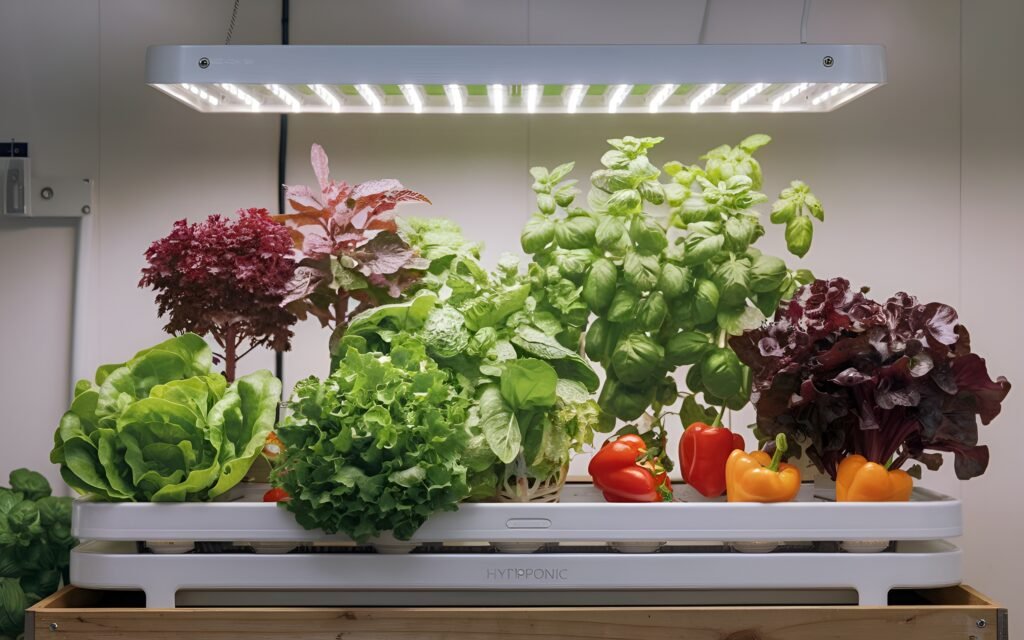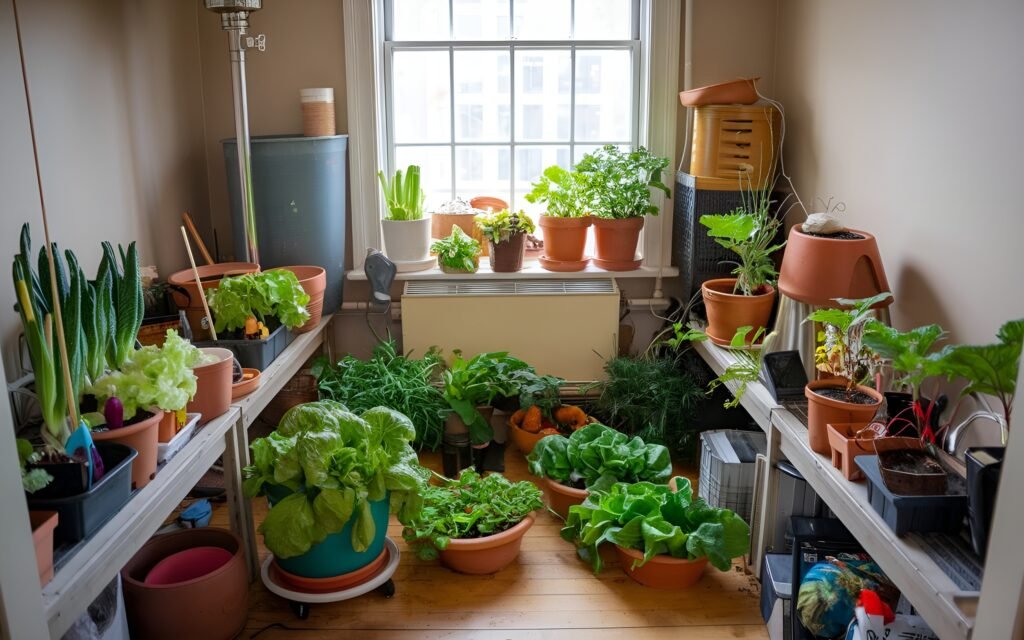I think growing vegetables indoors in the winter can be a rewarding way to enjoy your favorite greens year-round. These guidelines will help you get started on a succulent, indoor vegetable garden, even in the wintertime. Now we will learn about how we Grow Vegetables Indoors During Winter.
Why Grow Vegetables Indoors?
Whatever the weather, indoor gardening allows you to grow fresh vegetables and get formalin-free fresh vegetables. This way, you can reduce your grocery costs by using a little outdoor space. The flavor of freshly cultivated vegetables is unmatched!
Choosing the Right Vegetables for Indoor Gardening
When you are going to grow vegetables, it is very important to choose the right vegetables. There are some plants that thrive better indoors than others. Leafy greens, herbs and some small root vegetables like radishes and carrots are ideal choices. They do not require large spaces and intense sunlight to grow.
Setting Up Your Indoor Garden Space
I think your garden location should be draft-free and have plenty of light. If the space you choose for your garden does not have a south-facing window, you will need to use grow lights in your garden. Avoid locations subject to sudden changes in temperature as indoor plants like warm, humid environments.
Choosing Containers and Soil
Choosing the right pot is very important. Nutrient-rich potting soil encourages healthy growth, and adequate drainage helps prevent root rot in the pot. Look for a plant-specific potting mix that provides the balanced nutrients your plant needs.
Essential Lighting for Indoor Plants
Purchasing grow lights can make a significant impact on your winter garden during the winter months when sunlight is often scarce. You need to ensure that the plants in your garden receive at least 12-14 hours of light per day, for this LED or fluorescent grow lights can be programmed to replicate the sun’s spectrum.
Watering and Humidity Needs
Since indoor plants generally require less water than outdoor plants, watering is an art. Ensure that the top layer of ground is dry before watering the garden soil. You can also help by misting occasionally or using a humidity tray to maintain an appropriate humidity level around your plant.

Temperature Control
Temperatures between 65 and 75 degrees Fahrenheit are good for the majority of vegetables. To maintain the right atmosphere, especially in cold rooms, plants should be kept away from heaters and cold windows, and consider using a space heater.
Best Vegetables for Indoor Winter Gardening
- Lettuce and Spinach: Fast-growing leafy greens that thrive in cool environments.
- Herbs (Basil, Mint, Oregano): Easy to grow, and they add flavor to your winter cooking.
- Carrots and Radishes: Compact root vegetables that grow well in deep containers.
Starting from Seeds or Seedlings?
Although seedlings provide a head start, starting with seeds allows for more variety. If you want quick results, seedlings are best, I think the seeds can be grown in a warm place and then transplanted into larger pots once they have germinated.
Supporting Plant Growth Indoors
Use a water-soluble fertilizer that is balanced and fertilize your plants every two to four weeks. This boosts nutrient availability and supports faster growth. Plants with established root systems tend to flourish better indoors.
Read more about 10 Must-Know Tips for Thriving Gardens in Cold Climates
Dealing with Indoor Garden Pests
Even indoor gardens are vulnerable to pests like aphids and fungus gnats. Regularly check for pests, and use insecticidal soap or a gentle neem oil spray as safe, effective treatments.
Pruning and Harvesting Indoor Vegetables
Pruning encourages continuous growth and keeps plants manageable. For leafy greens, snip outer leaves and let the center continue growing. Herbs should be pinched back regularly to maintain their bushy appearance.

Troubleshooting Common Indoor Gardening Issues
Yellow leaves are frequently a sign of either too much or too little water, whereas leg growth may be a sign of inadequate light. Quickly fix these problems by altering the water and light as necessary.
Conclusion
A beautiful and healthy winter garden can open up a whole new world of fresh vegetables that will give you the joy of a healthy life. With the right care, you can grow a vibrant garden that will provide you with nutritious vegetables all winter long. So why not start your winter garden now and enjoy the rewards of your hard work!
FAQs
- Which winter crops are the simplest to cultivate indoors?
Leafy greens like lettuce, herbs, and small root vegetables are excellent choices. - Do indoor vegetables need a lot of light?
Yes, they need around 12-14 hours of light daily, which can be supplemented with grow lights. - How often should I water my indoor vegetables?
When the top inch appears dry, periodically check the soil’s and water’s moisture content. - Can I grow vegetables in any room of my house?
Choose a room with stable temperatures and minimal drafts for the best results. - What should I do if I see pests on my indoor plants?
Use insecticidal soap or neem oil to safely remove pests from indoor plants.




Pingback: Growing Herbs Indoors During Winter Months - Green Leaf Path